In American society, we tend to shun discrimination and generalization of entire groups of people unless they overly obese, Hollywood actors, or Civil War reenactors.. After the past several years, I have concluded that the latter is unfair. When the topic of reenactors comes up on discussion boards, podcast conference calls and blogs, someone will invariably state how they cannot stand to see men dressed in gray who are not emaciated like many of the soldiers in Lee’s army. In addition, there are stereotypes thrown around about men who simply want to jump on the battlefield and shoot their guns repeatedly. Then there is the perception that these men have a limited or misconstrued understanding of the period and the men who fought in it. This article serves to offer a counterview these seemingly prevalent stereotypes.
My experiences are purely anecdotal, but I doubt there are many people who can match my battlefield excursions over the past few years. I have visited sites from Gettysburg to Vicksburg and nearly everything in between. I have visited the former 12 times, taking 22 people with me in the process. Amazingly, reenactors are a rare occurrence. The most likely place to see them is Gettysburg and because I skipped the past two anniversaries, I have not seen a battle reenactment. However, men dressed in grey and blue still show up.
So what are they doing? It varies. Most of the time, they set up large tents with displays of artifacts from the period. Other times, they get on the field, demonstrating their weapons or period tactics. These men (and women!) have the goal of teaching. People love to share their hobbies and reenactors are no different. When I give tours of Gettysburg, these reenactors add a new dimension to the experience that my words, photos, and maps cannot recreate.
Last year, my coworker, Warren, and I ran into a group of Confederates near Pitzer Woods. They demonstrated how they used their guns and bayonets. What was most interesting to us was when they deployed in skirmishing lines. The visual was more powerful than the description.
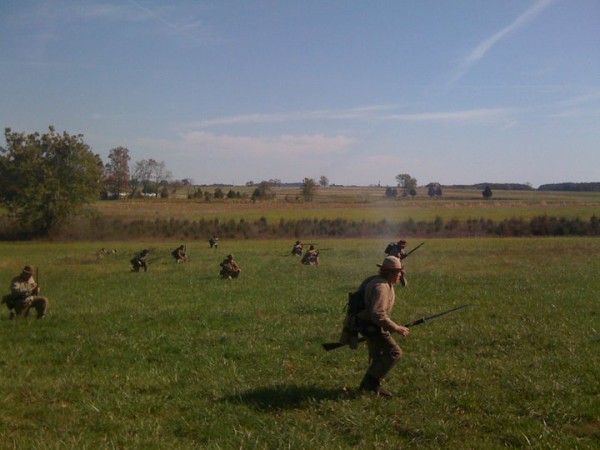
Warren took a photo and joked that he was studying the enemy’s tactics.
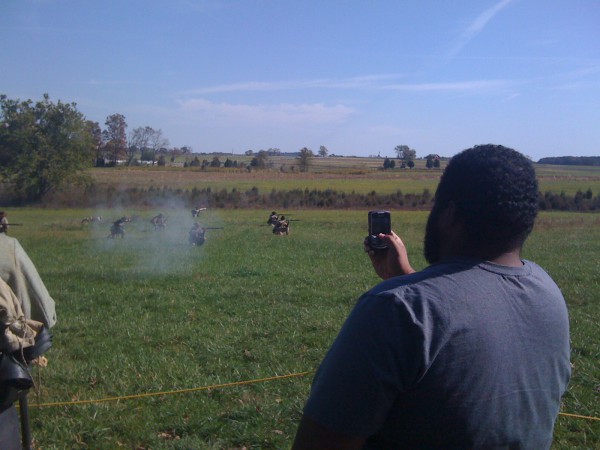
The experience was not over that day. In the distance, we heard cannon fire. We trekked over Cemetery Ridge and found a different reenactment group from Ohio. Due to park rules, they could only fire their cannon every 15 minutes, but during that time, they explained the role of every position in a battery group.
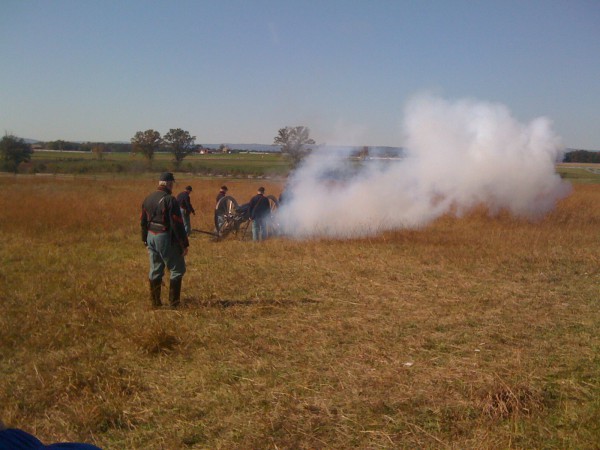
Yet, demonstrating weapons on the battlefield is only one aspect of reenactors. Their tents are full of period items they collected, loved, and know plenty about. Every time I visit one of these tents, I learn something new. For example, last year I was in a tent dedicated to the signal corps, the men in the army who utilized flags to send information between army units. A woman there showed us the following contraption that spies used to tap telegraph wires to listen in on messages.
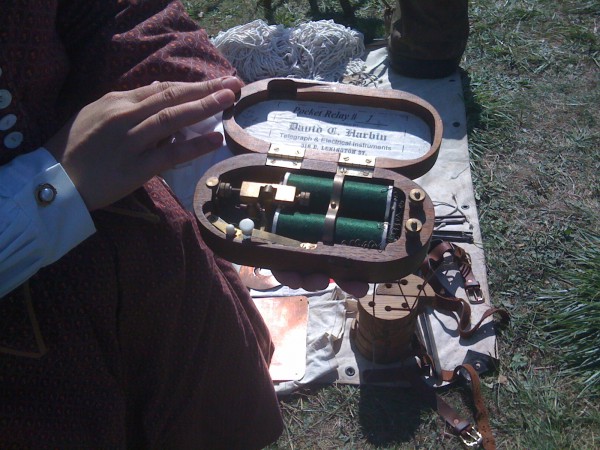
Last month, my wife and I visited Lee’s Headquarters in Gettysburg. Several Sons of Confederate Veterans were there and we stopped at the artillery tent. This man passionately described every artifact on his table and my wife continued to point at items asking, “What’s that?” Her curiosity infused him, as he explained the evolution of artillery during the Civil War for both the Union and the Confederacy. He was eager for us to pick up and hold everything including the weapons.
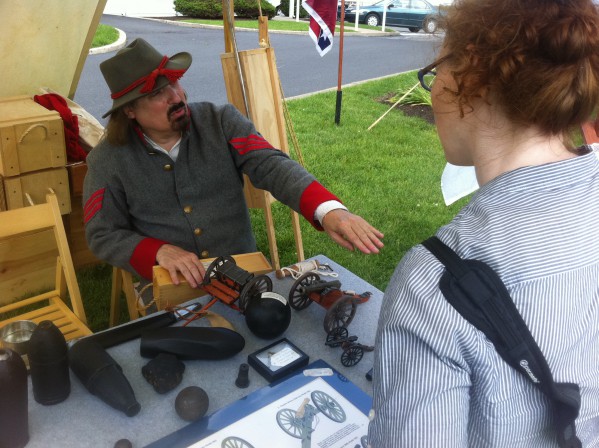
He had an original box of fuses for cannon balls. Depending on the distance, a battery group used fuses with different times so that the ball would explode over an area.
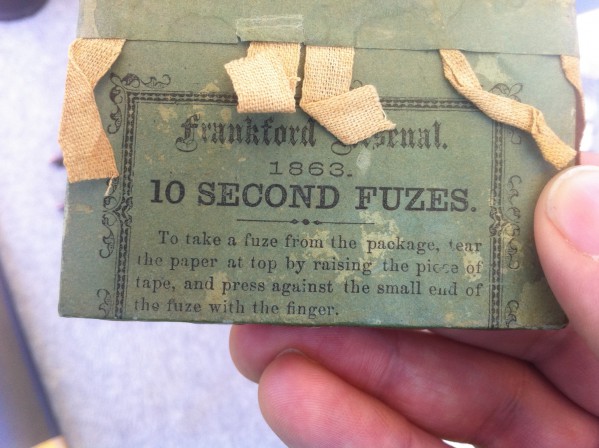
This Roman-like sword stuck out to me and the reenactor explained that the Confederate batteries used these as machetes to clear away foliage.
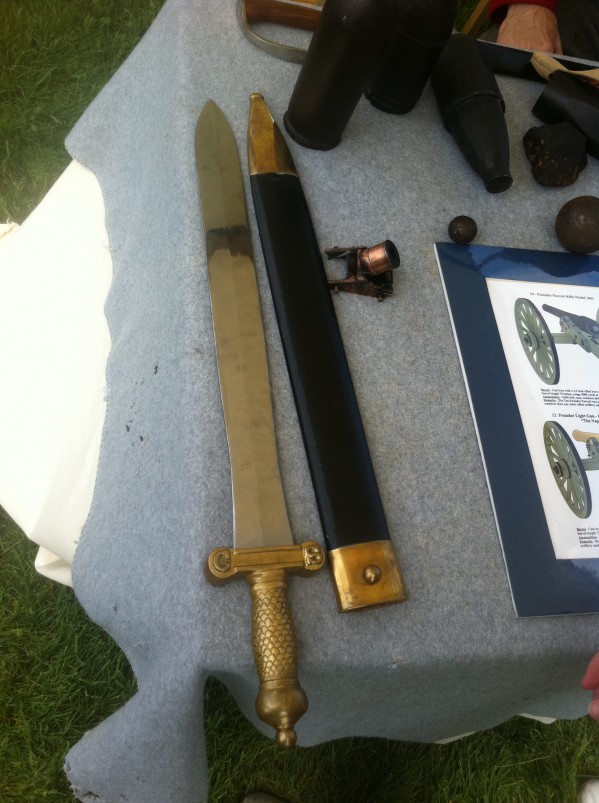
These stories only scratch the surface of what you can learn by visiting with reenactors. I have seen food tents, medical tents (not for the feint of heart!), and plenty of other assortments of themes to demonstrate period artifacts and life.
I present these anecdotes not to say that reenactors are infallible. I have heard some of them speak and get some facts wrong. However, these incidences have been rare compared to the extremely useful experiences of demonstrating period weapons and other artifacts. If you see a reenactor, especially in a tent, ask him about something. He will love to tell you about it and you will learn something.
